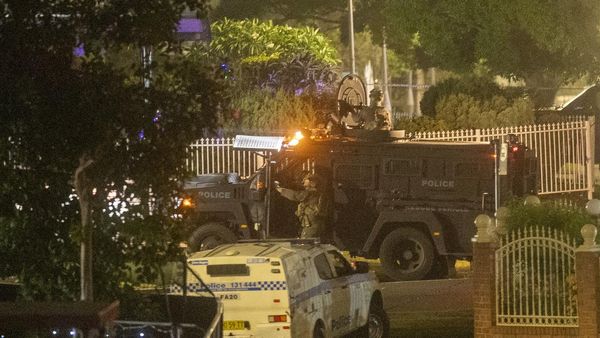
The states are likely to be given extra time to deliver water for the environment under the Murray-Darling basin scheme, but will be expected to provide firm action plans to ensure they fully deliver on their commitments.
The water minister, Tanya Plibersek, has also flagged her openness to further voluntary buybacks of water, and steered away from issuing threats about further buyback schemes, despite this mechanism being included in the plan.
The water ministers of the basin states – Queensland, NSW, ACT, Victoria and South Australia – met with Plibersek on Wednesday for the first time since she was elected in May amid concessions by NSW and Victoria they would fail to meet their water savings commitments by 2024, the plan’s deadline.
In her briefing afterward, Plibersek described herself as “delighted” with the progress, saying there was “a spirit of goodwill and cooperation”.
She said Murray-Darling Basin ministers had recommitted to achieving the plan in full, but she notably dropped the phrase “and on time” and conceded the deadline of 2024 was “challenging”.
“I am pushing for 2024 implementation. But I’m acknowledging that it’s hard to get there. I have to take into account realistically what states and territories are saying to me,” she said.
A further water ministers’ meeting has been scheduled for February, where ministers will be expected to come back with work programs that show how and when they will meet their commitments.
Although more than two-thirds of the water for the environment has been returned through buybacks of water entitlements from farmers, the last part of the plan that would see water returned to the river through efficiency projects, such as reducing evaporation, has proved challenging.
Plibersek acknowledged that some water projects had actually been delayed by too much water, which had made building difficult.
NSW was expected to ask for exemptions from its commitment to deliver the lion’s share of 605GL of water through big projects that are designed to save water through efficiency.
These included a now abandoned plan to reduce evaporation from water stored in the Menindee lakes to save 106GL and another project to make water transfers via Yanco Creek more efficient to save 35GL.
NSW is also three years late with most of its water resource plans.
Victoria was also expected to seek concessions on delivering an additional 450GL, which was agreed as the price of getting South Australia to agree to the plan.
After the meeting, the NSW water minister, Kevin Anderson, said that his state had done much of the heavy lifting in delivering the Basin plan, with almost half of the buybacks coming from NSW farmers.
He said ministers supported his recommendation “that a clear plan will need to be developed with specific actions that will provide flexibility for delivering projects and dealing with shortfall towards Basin plan targets.”
But environmental groups have expressed concern about NSW’s water-saving projects.
“It’s time to drop the fanciful engineering projects that were designed to fail, and buy back actual water for the rivers,” the chief executive of the Nature Conservation Council, Jacqui Mumford, said.
After the meeting, the SA minister for water, Susan Cross, said her state was withdrawing support for the socio-economic test, which she described as four pages of “bureaucratic gobbledy-gook”. The test of “no socioeconomic impact” has proved a major stumbling block for projects being funded.
Jono LaNauze, CEO of Environment Victoria, said they were encouraged that Plibersek reaffirmed the commonwealth’s commitment to recovering the 450 GL but it was concerning that she had left the door open to further delays.
“It is the environment that bears the cost of delayed water recovery,” he said.
“We may be in La Niña now but the next drought is just around the corner. If we haven’t recovered enough water by then, the outcomes could be catastrophic for our rivers and native fish populations.”
Celine Steinfeld, convener of the Wentworth Group of Concerned Scientists, said simply extending deadlines would not work.
Plibersek said “significant progress” had been made towards a partnership on water market reforms, and on indigenous water rights.
First Nations people currently hold only 0.2% of water entitlements.
The previous government set aside $40m in 2018, but then appeared to backtrack on using it to buy water.
Plibersek said the money would “100% be in the budget” and that consultations were under way with First Nations communities and others to make sure that they were investing in the best possible way.







